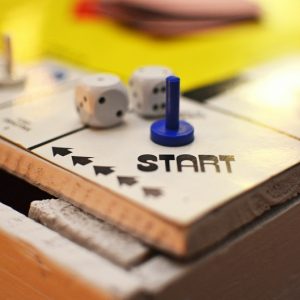Home Is Where the Start Is
I never realized how the rules we established in our home when our kids were young could have such a profound impact on how we navigate life today. There are so many recommendations regarding safety and social distancing. With those guidelines come choices we each need to make about what we will personally do.
While “Stay At Home” orders have been lifted, there are still a set of suggested practices in place in an effort to keep us all safe. For the sake of illustration, let’s call these guidelines “Rules”. When our kids were young, we established a set of “Rules” that every family member was expected to follow. There were also consequences. If the rules were followed, there were positive consequences. If not, there were negative consequences. This simple structure made clear the fact that every choice has a consequence – good or bad.
For the last few months, we have all been experiencing life at home in a very different way. It may be stressful having everyone at home, but it’s also a blessing. More families are eating meals, playing games, watching movies, and even engaging in conversations together. What a shame that it took a pandemic to help us rediscover our own families.
There is another opportunity here to help shape a more healthy and successful future. I wonder if having a few “Rules” to follow at home would make being at home less stressful while also making it easier to follow the guidelines outside the home. At last count, we had 36 House Rules. I’d like to share three of my favorites. If you like the idea, you’re welcome to use these or come up with your own.
Rule #1: Answer the question you’re asked.
This has been one of the best rules we’ve ever implemented. It clarifies conversations and reduces confusion. I wish the media and the people they interview could follow this rule. Think about how much less confusing the world would be.
Rule #2: No devices at the dinner table.
The best way to enjoy dinner with your family is by reducing distractions. Consider creating a charging area (a “Parking Lot” if you will) for cell phones and other devices. Just before sitting down to dinner, invite everyone to place their devices in the charging area so they’re out of reach. To further reduce distractions, play music in the background rather than turning on a TV show. For variety, let a different family member pick the music each night.
Rule #3: Knock and ask permission before entering a room with a closed door.
Having everyone in the same house can make you feel like you have no privacy at all. No matter where you are in the house, maybe people just barge in unannounced. This rule provides some needed privacy while helping others to respect your privacy as well. You may consider starting with locking closed doors so others are required to knock before entering. Then, once others in your home get used to the idea, you can close the door without locking it, and they’ll still knock. Another idea is to put a sign on the door, so others know you’re busy. For example, “I’m on a Zoom call”, “I’m working”, or “I’m taking a nap”.
2 NEW RULES
We’ll call these rules 4 and 5. Due to the global pandemic, and the recent removal of the “Stay At Home” orders, we have two new rules in our house to help keep us safe inside and outside of our own home.
Rule #4: Wear a mask when going out around others.
Everyone in our house has their own cloth mask. We used a Sharpie to put an initial on each mask to identify the owner. When going inside anywhere other than our own home, the expectation is that the mask be worn. We have discussed how the mask primarily helps protect others, and it also protects us. While we can’t force other people to wear a mask in public places, we can choose to lead by example.
Rule #5: Keep our house clean.
When returning home, the rule is that clothes are put into a load that will be washed that day. This includes masks, shirts, pants, and other outerwear. Depending on where the family member went, other practices are followed ranging from thorough hand washing to a complete shower. For example, if you just drove to a restaurant to pick up dinner, and the staff brought it to your car, hand washing makes sense. If you spent time indoors at a store, residence, or other indoor facility, a change of clothes or a shower might be in order. We also wipe down items brought into our house from a shopping trip or a delivered package.
I’m not saying that everyone needs to adopt our rules. Instead, I’m suggesting that our behaviors and choices begin with what we teach and learn at home.
For years, I’ve been sharing stories about navigating beyond perceived limitations. The current global health crisis has created some very real limitations for life as we know it. However, we can successfully navigate these challenges if we begin with what happens in our own homes.



